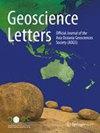台湾西南部从陆地到近海沿变形前沿的成震结构
IF 4.3
3区 地球科学
Q1 GEOSCIENCES, MULTIDISCIPLINARY
引用次数: 0
摘要
精确成像震源结构对于地震灾害评估至关重要。这一点在台湾西南部近海的变形前沿(DF)地区尤为重要,该地区的地震潜力很高,但人们对其断层结构和地震活动仍知之甚少。在此,我们利用 1991 年 1 月至 2019 年 3 月期间的次中心重定位和初动焦点机制解决方案,对台湾西南部陆上和近海 DF 沿线的成震结构进行了全面划分。共划分出五个不同的成震结构。特别是,高能地震活动始于 2017 年 Mw5.3 台南地震之后,并沿 DF 西侧向东北方向迁移。DF 的离岸迹线可作为划定 DF 西侧俯冲欧亚板块挠曲应力驱动的地震活动的边界。这一观测结果可对未来台湾西南部近海地震的震级估计产生制约作用。同时,地震力矩释放较高的区域位于DF附近而非已知断层,表明DF可能主导地震力矩释放。然而,地震应变变化、DF 结构和地震活动性之间的复杂关系有待进一步研究,以进一步了解地震潜力。我们的一动焦机制解表明,台湾西南部的几个地震具有与台湾造山运动走向平行的 P 轴方向的特征。欧亚板块和菲律宾海板块之间的持续碰撞所引起的横向压缩可以解释这些地震事件。本文章由计算机程序翻译,如有差异,请以英文原文为准。
Seismogenic structures along the deformation front from onshore to offshore SW Taiwan
Accurately imaging seismogenic structures is crucial for seismic hazard assessment. This is especially important around the deformation front (DF) region off SW Taiwan, where seismic potential is high but the fault structure and seismic activity are still poorly understood. Here, we present a comprehensive delineation of seismogenic structures along the onshore and offshore DF of SW Taiwan, utilizing hypocenter relocations and first-motion focal mechanism solutions from January 1991 to March 2019. Five distinctive seismogenic structures are delineated. Particularly, the energetic seismic activity initialled after the 2017 Mw5.3 Tainan earthquake and migrated northeastward along the western side of the DF. The offshore trace of the DF could serve as a boundary delimiting the seismic activity driven by the flexural stress of the subducted Eurasia Plate to the west of the DF. This observation could constrain the magnitude estimation of future earthquakes offshore SW Taiwan. Meanwhile, the areas with higher seismic moment release are located near the DF rather than known faults, indicating that the DF may dominate the seismic moment release. However, further study is warranted into the intricate relationship among seismic strain variation, the structure of DF, and seismic activity to further understand the seismic potential. Our first-motion focal mechanism solutions show that several earthquakes in SW Taiwan were characterized by P-axis orientations parallel to the strike of the Taiwan orogeny. Those events are preferably explained by the lateral compression induced by the ongoing collision between the Eurasia and Philippine Sea plates.
求助全文
通过发布文献求助,成功后即可免费获取论文全文。
去求助
来源期刊

Geoscience Letters
Earth and Planetary Sciences-General Earth and Planetary Sciences
CiteScore
4.90
自引率
2.50%
发文量
42
审稿时长
25 weeks
期刊介绍:
Geoscience Letters is the official journal of the Asia Oceania Geosciences Society, and a fully open access journal published under the SpringerOpen brand. The journal publishes original, innovative and timely research letter articles and concise reviews on studies of the Earth and its environment, the planetary and space sciences. Contributions reflect the eight scientific sections of the AOGS: Atmospheric Sciences, Biogeosciences, Hydrological Sciences, Interdisciplinary Geosciences, Ocean Sciences, Planetary Sciences, Solar and Terrestrial Sciences, and Solid Earth Sciences. Geoscience Letters focuses on cutting-edge fundamental and applied research in the broad field of the geosciences, including the applications of geoscience research to societal problems. This journal is Open Access, providing rapid electronic publication of high-quality, peer-reviewed scientific contributions.
 求助内容:
求助内容: 应助结果提醒方式:
应助结果提醒方式:


